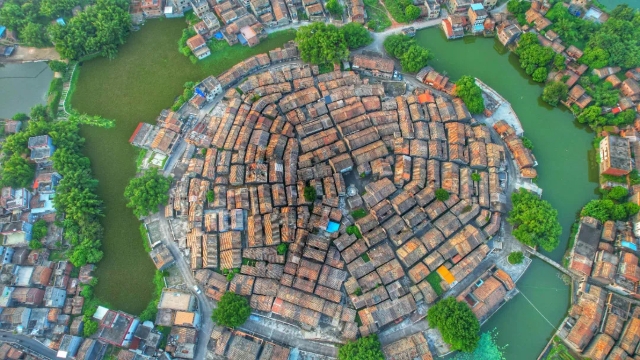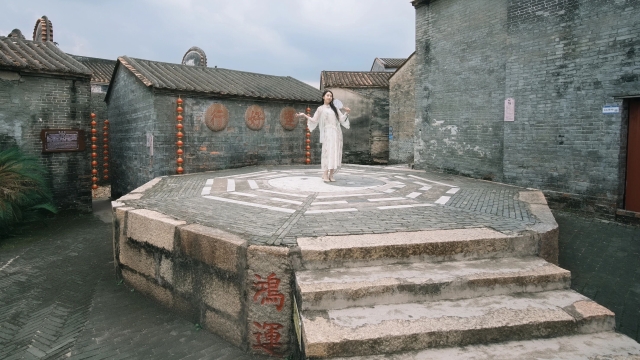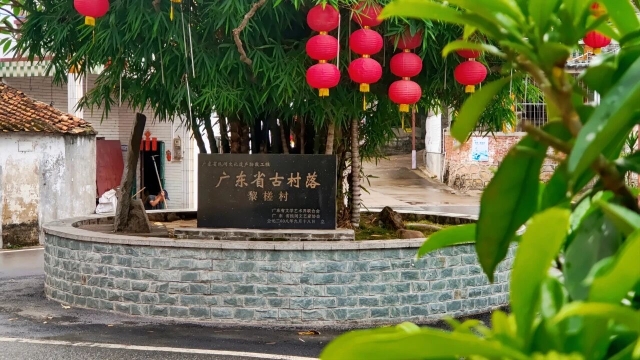From a bird's-eye view, an ancient village built on the slopes of Fenggang Mountain in Guangdong province reveals its most enigmatic feature: a layout resembling a massive Tai Chi Bagua (or Eight Trigrams).
 Photo: Huilong Town
Photo: Huilong Town
 Photo: Lijie Village
Photo: Lijie Village
This is Licha village in Zhaoqing, a settlement dating back to the Song Dynasty (960-1279), where houses and alleys are arranged in eight concentric rings, creating a labyrinthine spectacle.
Located in Huilong town, Gaoyao district of Zhaoqing, the village stands as a living museum, a testament to over 700 years of heritage.
Founded around 1218 during the Southern Song Dynasty (1127-1279), Licha was ingeniously designed for defense. Surrounded by water on all sides, the villagers built their homes with stone foundations and grey bricks, all with doors facing inward, forming a circular, fortress-like community of seven to eight rings. With only two gateways, one to the north and one to the south, the village's design, when seen from above, is a marvel of ancient planning, echoing the profound principles of the Bagua.
 Photo: Lijie Village
Photo: Lijie Village
Beyond its unique architecture, Licha has deep roots in overseas Chinese history. Records show that villagers began migrating to Australia more than 170 years ago. Today, while the permanent population of Licha is just over 1,400, more than 1,000 of its people reside in Australia, earning it the well-deserved title of an "overseas Chinese village."
The village is most vibrant during the Spring Festival and Mid-Autumn Festival, when overseas Chinese from Australia, New Zealand, the Netherlands, and other countries return to their ancestral homes to clean their family houses and pay respects to their ancestors.
Like many hometowns of overseas Chinese, Licha once faced the hollowing out of its population. However, the local government is now revitalizing this ancient village by integrating its resources. During the recent National Day and Mid-Autumn Festival holidays, Huilong town launched a series of events, linking the Licha Bagua Village scenic area with other local attractions like Cat's Paw Valley, Qiqu Garden, and a sports park. This initiative offers visitors a one-stop experience, blending the charm of the ancient village with the pleasures of modern tourism.
 Photo: Liang Shiming
Photo: Liang Shiming
 Photo: Huilong Town
Photo: Huilong Town
If you go, Huilong town in Zhaoqing is easily accessible from major transportation hubs in Guangdong province (广肇高速).
From Hong Kong: Visitors can take a direct ferry to Zhaoqing or travel via high-speed rail.
Best time to visit: October to December, when the weather is pleasant and various cultural festivities are held.
National Day and Mid-Autumn Festival activities: Visitors can enjoy trying on traditional Hanfu clothing for free, take advantage of complimentary professional photography services (on Oct 6), and participate in photo check-ins at key locations.
Reporter: Wang Junxin, Tong Hua
Editor: Huang Qini, James Campion, Shen He






